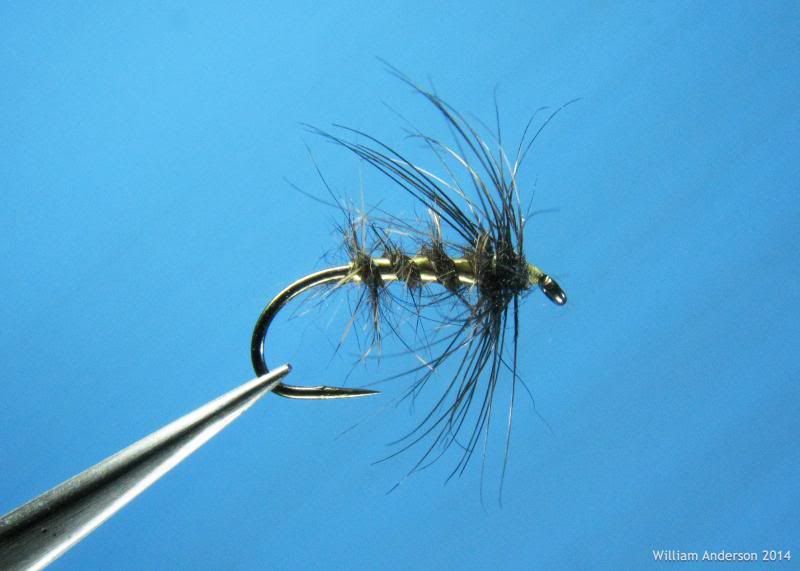Sanctuary

w
Moderators: William Anderson, letumgo

I have been thrilled by this pattern since I read about it years ago, but this is the first time I have tied it. Looks as if I was lucky. Coch-y-Bondhu hackle can be spicy sometimes, and the tinsel is the real deal from several decades ago. The fur is taken from the lower inside part of the hare's ear. It is important to remove it while the hare is still running. The primrose silk comes from an old wooden spool. They must have been stored well; I have only had one Pearsall's silk breakage and that was the other day (purple from a plastic spool - beware of plastic).Re: Partridge and Hare's Ear
Postby daringduffer » 05 Dec 2013, 20:12
There was a fly similar to this one, "invented"/popularized by Dr Thomas Sanctuary (friend of GS Marryatt, HS Hall and FM Halford). He used a Coch-y-Bondhu hackle and probably fished it as a dry fly. I would be surprised if it wasn't fished wet as well...
The Sanctuary:
Dark Hare's ear fur on primrose silk
ribbed with flat gold tinsel
C-y-B hackle
A beautiful alternative to your excellent fly.
dd
slowly recovering
End of story. Or not."It was in April, 1867. I was enjoying an Easter holiday, fishing the late Mr R.B. Sheridan's water on the Dorsetshire Frome, and was accompanied by a very intelligent lad, who carried the impedimenta. A few weeeks earlier, John Hammond, the well-known Winchester fisherman, had initiated me into the art and mystery of making my fly float on the crystal waters of the Itchen, after I had completely failed to entice those wary trout by the usual two or three wet-fly means. No lubrication then, only continual whipping to get the fly dry enough to float, and, I'm afraid, it never occured to me to grease it. Anyhow, that day subsequently on the Frome my lad, in answer to my complaint, that after a few throws the fly would persist in sinking, remarked *Pity, zur, that you can't oil the fly like a duck oils his feathers, then her would float surely*. This set me thinking. The next duck that was killed at home had his oil gland carefully extracted, and I carried it about wrapped in a piece of chamois leather, and greased my flies with it successfully, till, after many days, it became somewhat 'whiffy', and I was obliged to discard it".
Stefan, That is one of the most colorful passages of fishing lore that I have come across.*Pity, zur, that you can't oil the fly like a duck oils his feathers, then her would float surely*. This set me thinking. The next duck that was killed at home had his oil gland carefully extracted, and I carried it about wrapped in a piece of chamois leather, and greased my flies with it successfully, till, after many days, it became somewhat 'whiffy', and I was obliged to discard it".